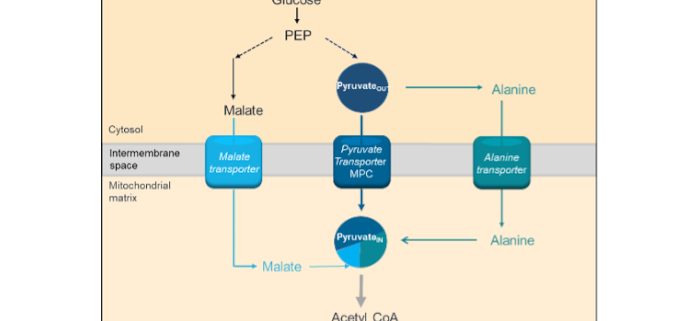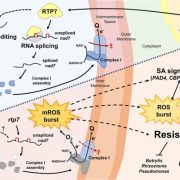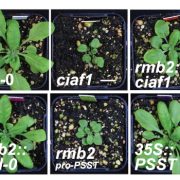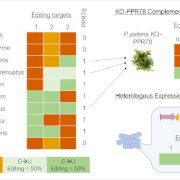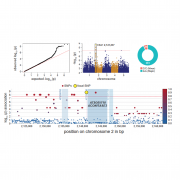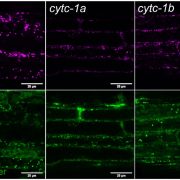What plant mitochondria eat: The route of pyruvate to respiration in Arabidopsis
Le et al. demonstrate that mitochondria get pyruvate three different ways.
Plant Cell
By X.H. Le, C.P. Lee and A.H. Millar
The University of Western Australia
Perth, Australia
Background: Plants photosynthesise and make starch in the day so that at night they can extract energy from starch for plant growth and development. That energy extraction process is called respiration and it occurs within mitochondria. Pyruvate is a product of starch and sugar breakdown and is the main substrate for respiration. Pyruvate must be constantly made and somehow transported into mitochondria. In yeast, fly, mouse, and human, a protein called the mitochondrial pyruvate carrier (MPC) is in charge of providing mitochondria with pyruvate by transporting pyruvate across the mitochondrial inner membrane. But knocking out this protein in Arabidopsis does not cause visible effects on plant growth. This means either that MPC does not transport pyruvate in plants or there are other pathways that also provide pyruvate for plant mitochondrial respiration.
Question: How many pathways are involved in supplying pyruvate for mitochondrial respiration and which pathway is the main one?
Findings: By comparing Arabidopsis wildtype and mutants, we found out there are three pathways that work in parallel to provide pyruvate to mitochondria. Firstly, MPC can directly import pyruvate across the mitochondrial membrane. Secondly, pyruvate can be converted into alanine in the cytosol, transported across the mitochondrial membrane and alanine can be converted back into pyruvate inside mitochondria. Thirdly, mitochondria can make pyruvate internally from malate. Having three pathways that can perform the same role allows plants to be flexible to the external and internal environment and ensures a constant supply of pyruvate for energy production. The effect of losing one and/or two pyruvate supplying pathways on Arabidopsis growth hints that direct pyruvate import and pyruvate–alanine conversion are the main pathways, while malate-derived pyruvate contributes the least to the total pyruvate pool.
Next steps: Further research is needed to quantitate how much pyruvate is supplied by each pathway under different conditions. Information about which condition favours which pyruvate source can be used to alter plant metabolism so that energy can be generated and used more efficiently in different circumstances.
Xuyen H. Le, Chun-Pong Lee, A. Harvey Millar. (2021). The mitochondrial pyruvate carrier (MPC) complex mediates one of three pyruvate-supplying pathways that sustain Arabidopsis respiratory metabolism. https://doi.org/10.1093/plcell/koab148


